Covid-19 is now the 10th leading cause of death. And, yes, it’s still more severe than the flu.
Throughout the pandemic, many have longed to understand Covid-19 in the context of flu. It makes sense—they’re both respiratory viruses with similar symptoms transmitted in similar ways. Flu is a familiar risk—we knew where it stood in our repertoire of threats, making it a helpful comparison for calculating the risk of a novel threat.
Covid-19 is here to stay, but the risks—severe disease, death, and long covid—have declined dramatically.
So, in anticipation of the upcoming fall season, this begs the question: Is Covid-19 still more severe than the flu? Yes, but the gap is narrowing.
Covid-19 is now the 10th leading cause of death
Last week, CDC published 2023 provisional data on causes of death. This is basically a first draft of data—the numbers may shift with more death certificate reviews, but they typically don’t change dramatically.
What did CDC find? Last year Covid-19 plunged to the 10th leading cause of death—down from 4th in 2022 and 3rd in 2021. When looking at raw numbers, there was a nearly 70% decrease in one year! (245,614 deaths in 2022 vs. 76,446 in 2023.) We’ve come a long way.
This dramatic decline in deaths wasn’t just in the U.S. We’ve seen deaths plunge across the globe thanks to immunity (from vaccination and infection) and treatments like monoclonal antibodies and antivirals.
While this is incredible news, Covid-19 is still more deadly than flu
Below is the percentage of deaths attributed to flu (blue) and Covid-19 (orange). We still see a whole lot more orange compared to blue.
This is the case across almost all ages except between 1- 14 years old.
However, death surveillance may be biased. For example, more people may write Covid-19 on death certificates than flu.
So, the Veterans Affairs St. Louis Health Care System examined health records of 11,000 patients this past 2023-2024 season. They found that 6% of patients hospitalized with Covid-19 died within 30 days of admission versus 4% of patients with flu. In other words, the risk of death from Covid-19 was 35% higher than from flu among hospitalized patients.
However, there are two silver linings:
The gap between flu and Covid-19 is decreasing. In the prior year (2022), scientists noted a 60% higher risk of death for hospitalized Covid-19 patients.
Hospital outcomes are becoming more similar. Another study compared hospital outcomes of patients in 2021 (Delta) to 2022 (Omicron) and found that the severity of outcomes decreased, meaning that fewer and fewer people had to be admitted to the ICU, fewer received invasive treatment, and fewer died over time.
While the threat of severe Covid-19 to our individual lives might have decreased, the burden on our healthcare system and economy continues to persist. A report from McKinsey & Company estimated endemic Covid-19 would add $220 billion to our total healthcare costs by 2027, mostly driven by outpatient costs.
Flu isn’t necessarily something to brush off, either
Although Covid-19 is still more severe than flu, it’s important to remember that flu causes a lot of preventable morbidity and mortality. Each year, between 140,000 and 710,000 are hospitalized for flu in the U.S., and 12,000 to 52,000 Americans die. The economic burden of flu is estimated at $11.2 billion per year.
Flu can also cause “long flu” just like Covid-19 can (albeit at different rates—there’s a higher risk of long Covid than long flu, which YLE touched on previously).
The flu- vs. Covid-19 vaccine paradox
Despite Covid-19 being more severe than flu, far fewer people are vaccinated for Covid-19 than flu. Last fall, 1 in 4 U.S. adults received the updated Covid-19 vaccine, while 1 in 2 received the flu vaccine. This interesting (and disappointing) paradox is mainly driven by loss of trust, vaccine hesitancy, pandemic fatigue, and limited access.
Bottom line
Even as Covid-19 falls in death rankings, it’s still more severe than the flu. Fortunately, for both, we have vaccines. But we need to actually utilize them so these viruses stop costing lives and disrupting our economy and overall well-being year after year.
Love,
Andrea Tamayo
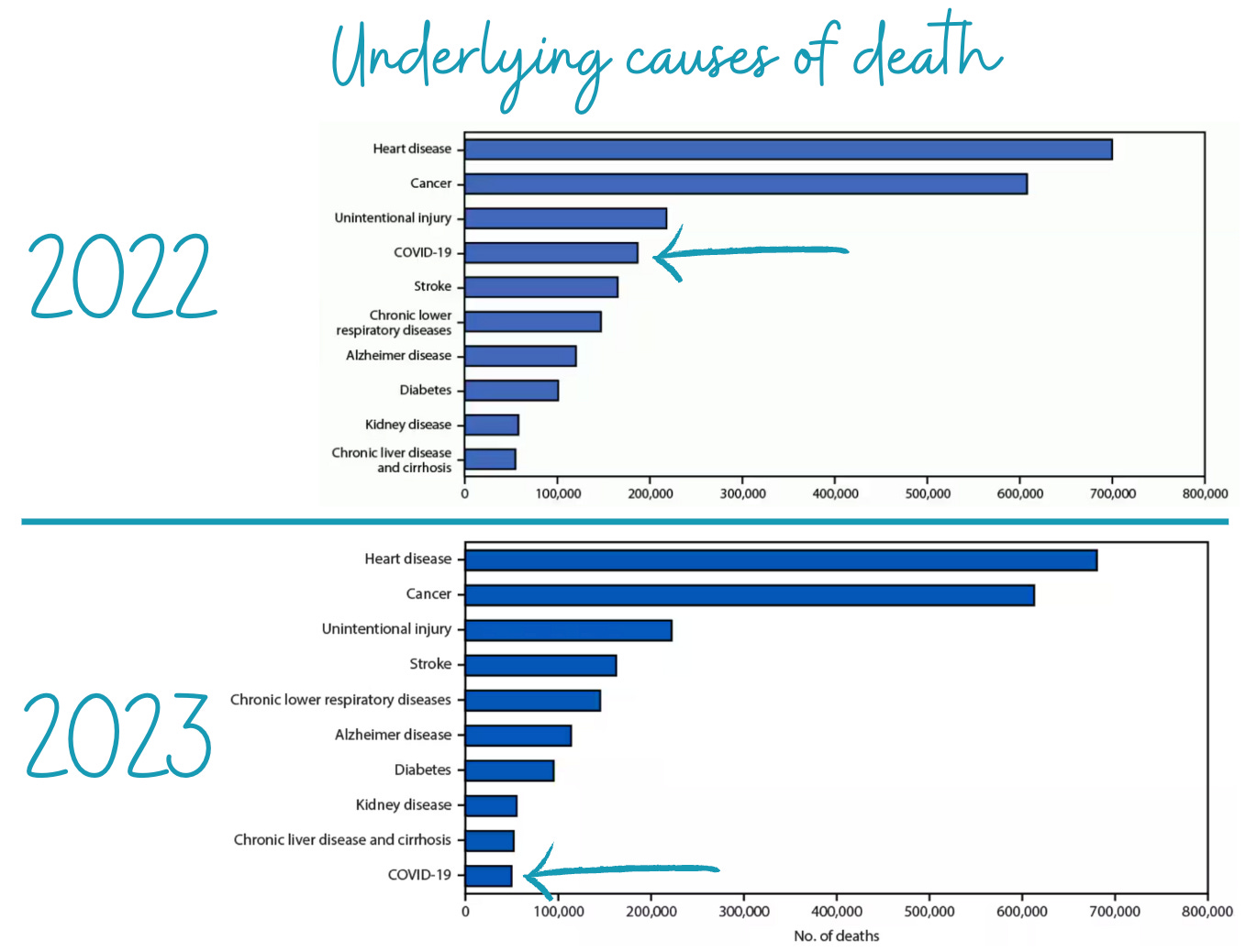
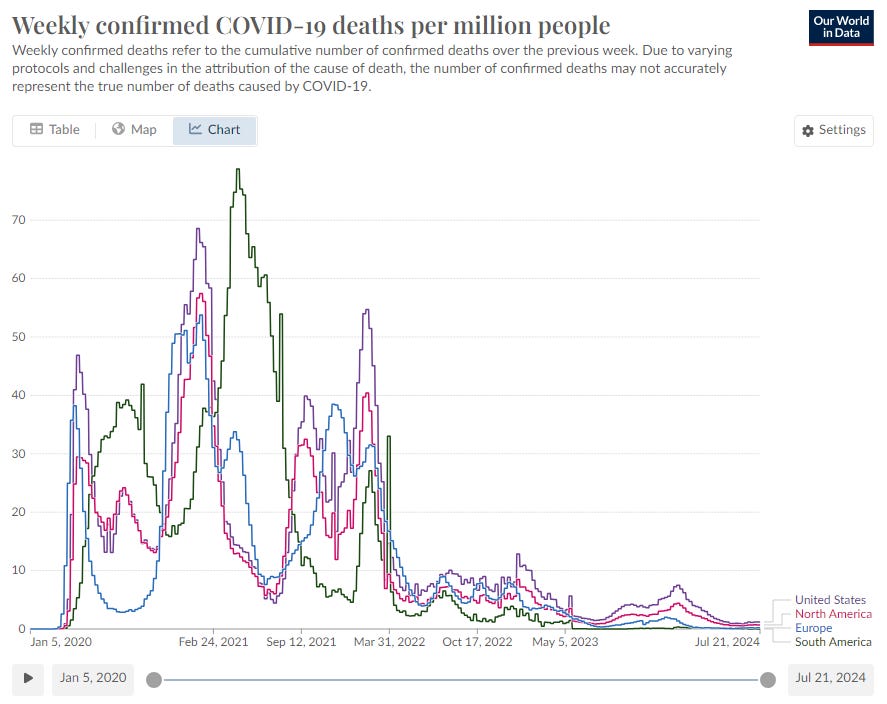
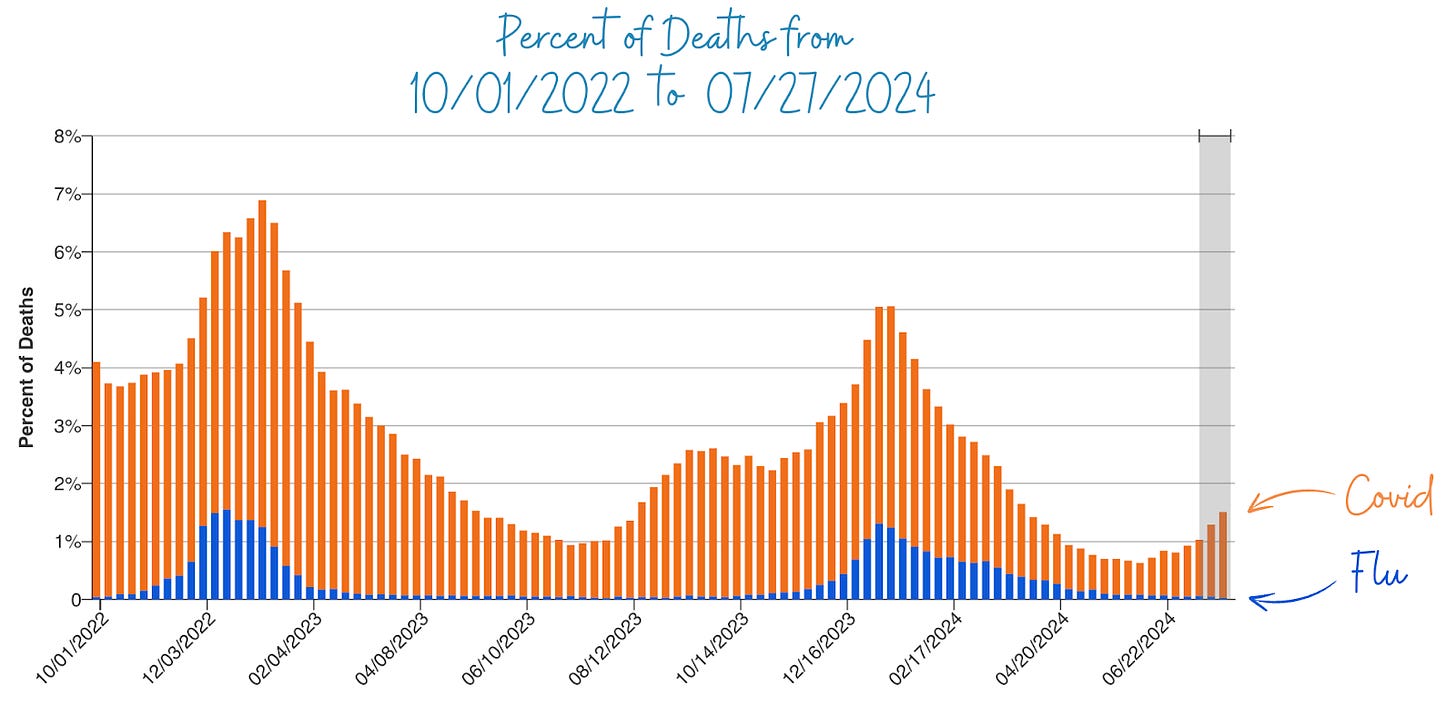
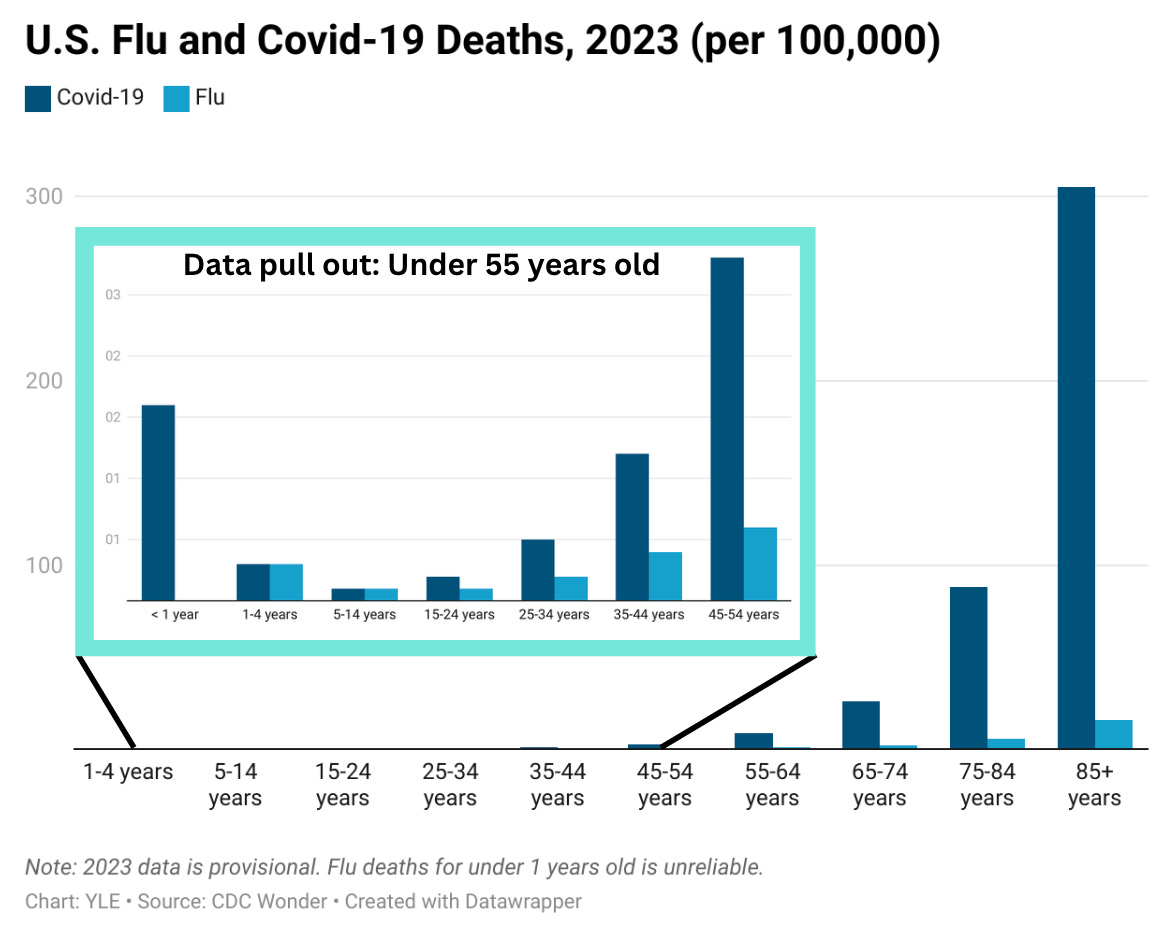
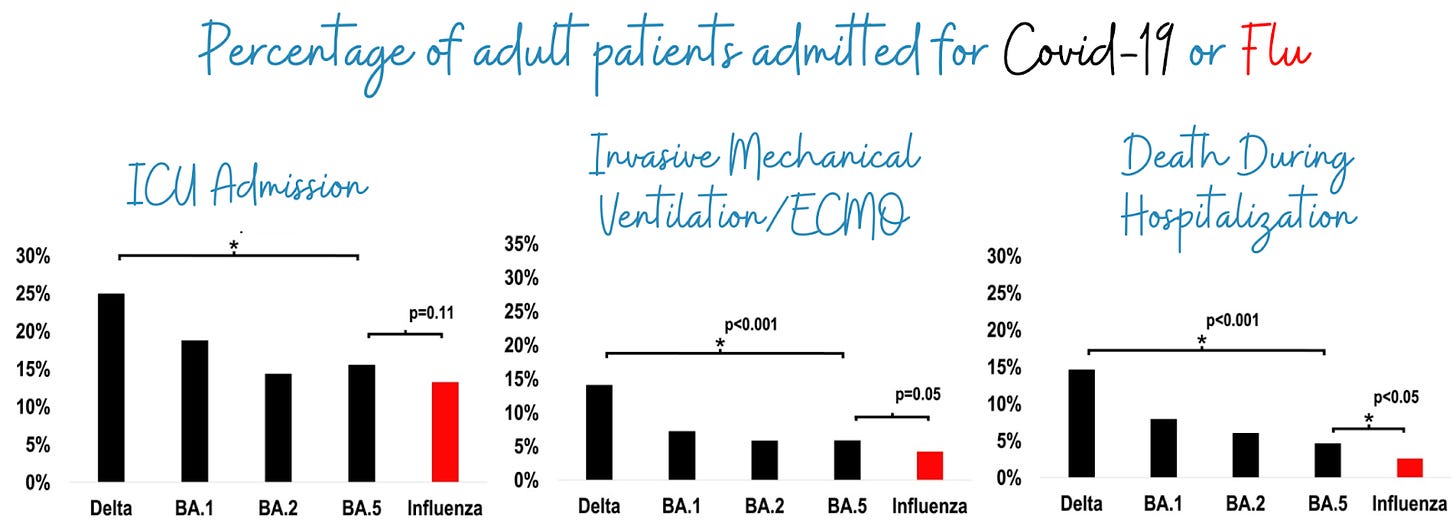
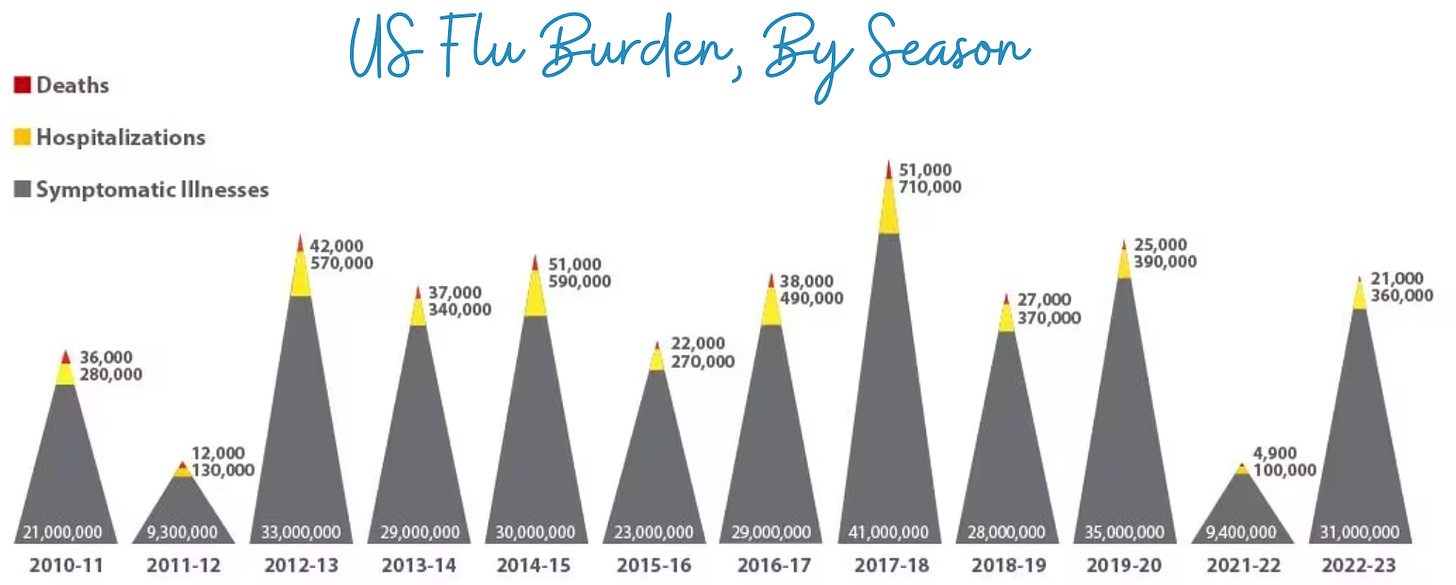
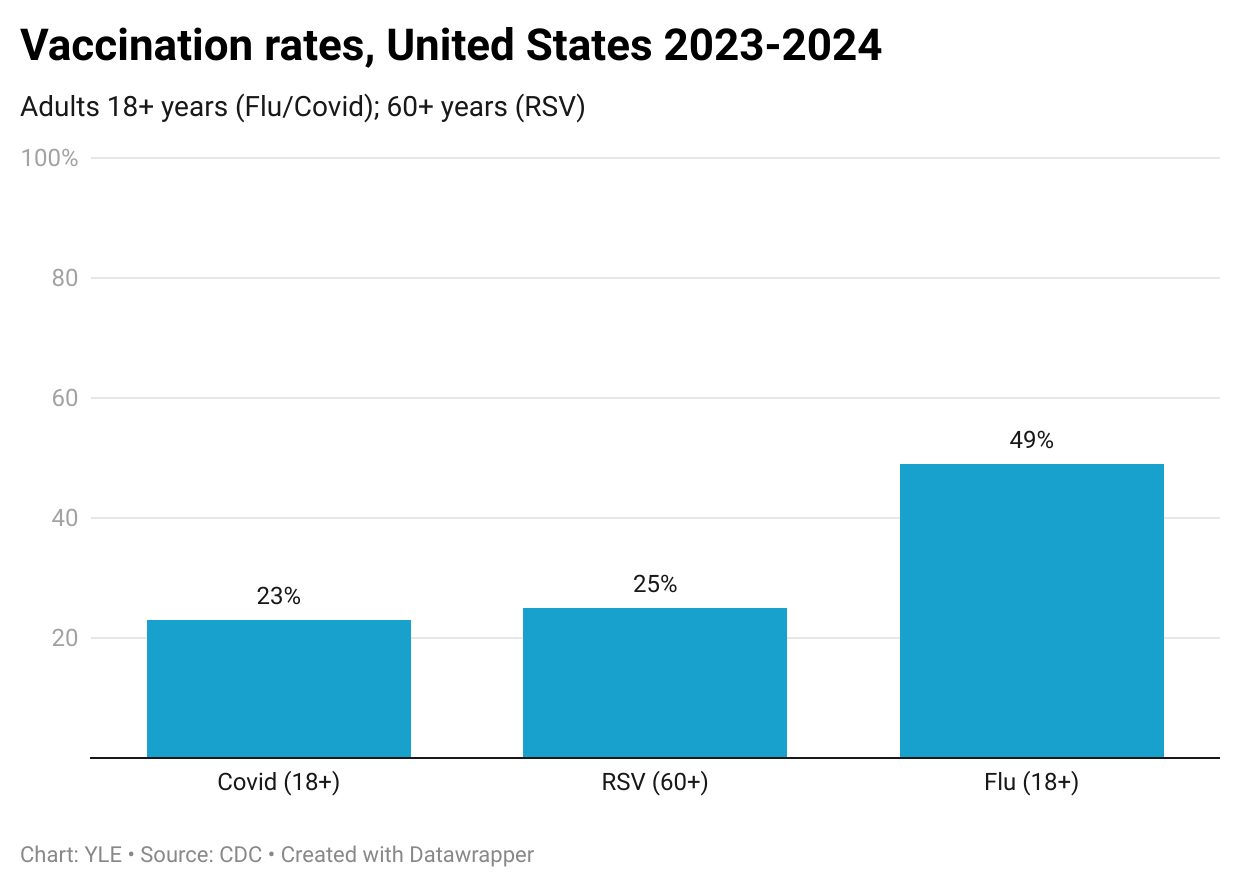












.jpg)
No comments:
Post a Comment